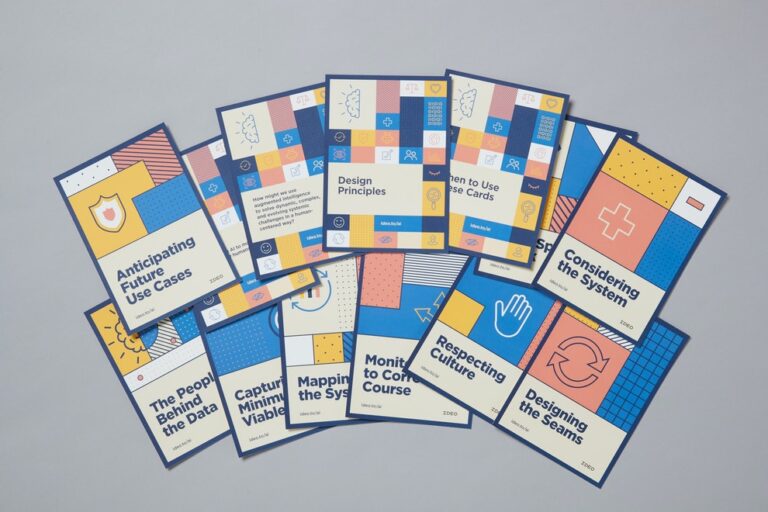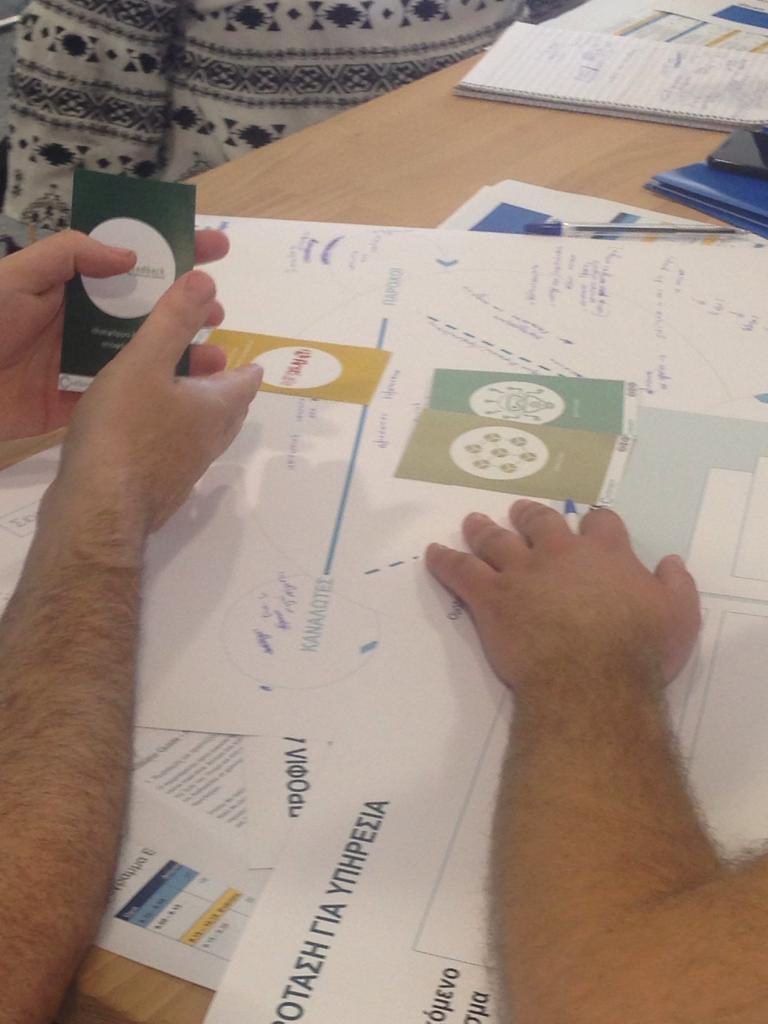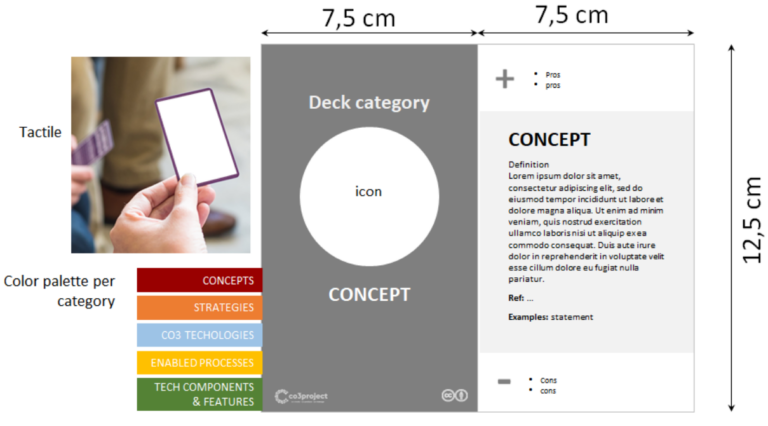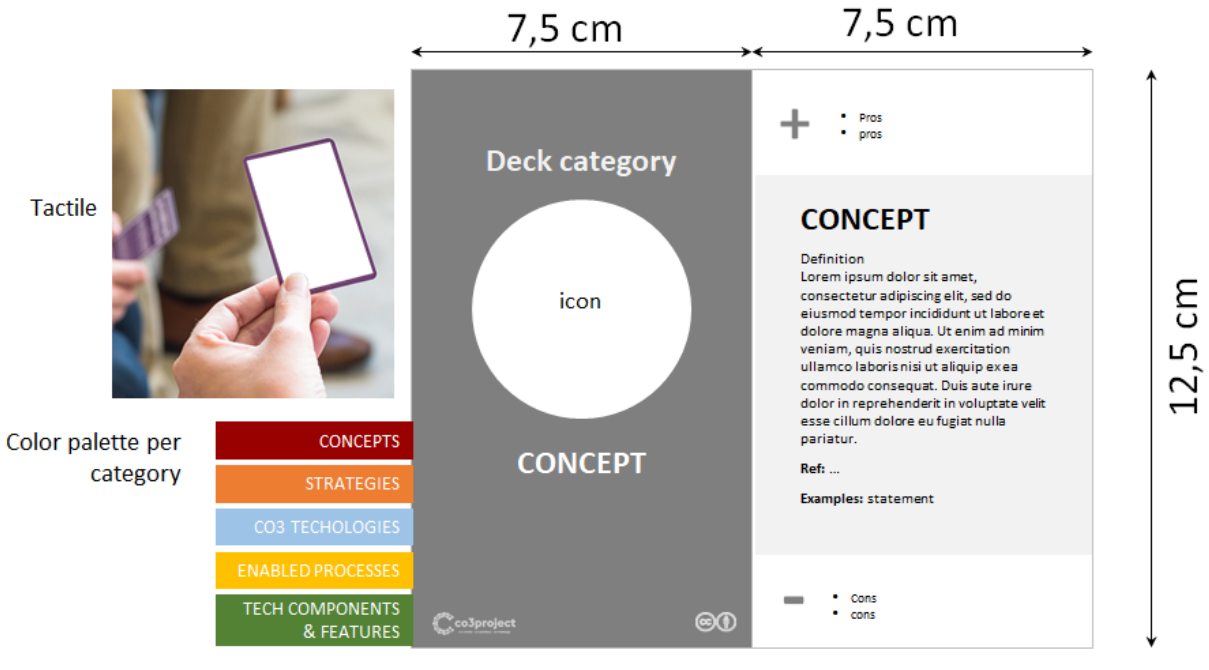Cards are a tool widely adopted in games, academic and corporate institutions to symbolize actions & elements. This flexibility provides an interactive design tool that can be used in a group of designers without spending time in explain or create mockups for simple concepts. The CO3 CARD DECK is based on the IDEO method cards.

Those cards symbolize simple ideas with their related properties. That properties can be the motivation to include the card, advantages, disadvantages, requirements and can be supported by some graphical aid. The graphical aid is an essential feature because it provides the participant a fast way to identify and then choose each of the cards without reading the description once its a known card (or concept).

The use of a card deck like the CO3 CARD DECK provides a shared vocabulary (or an agreement of a concept) that saves time that would be spent on defining the concept. Then it is essential to design cards with the idea as specific as possible. For instance, in the context of creating a transport application, it is better to use a card of BUS, CAR, or Bicycle to define the concept of the vehicle. Meanwhile, in the context of defining public services, it might be better to use concepts like PRIVATE vehicle and PUBLIC vehicle cards.

Is it possible to segregate the card deck in groups by adding a visual aid like color or ribbon, this is useful in case that there is the requirement of complete with one card each category.
Summarizing, to create a CARD DECK like the CO3 is essential to:
- Delimit the context where the cards will be used
- Be as specific as possible, splitting the concepts into the smallest part possible. This enables the participants to stack concepts to create complex ones.
- Add a visual aid to each card for fast concept recognition.
- Decide if there is some categories requirement because of possible card incompatibilities, or there is the need for a card for each category.
- Include a general and short description of the concept (2-3 lines), including the pros & cons section, if there are alternative options for each idea.
- In the case of concepts that had requirements, add a requires & provides section.

- Concepts categories include cards that define:
- Sharing economy: A group of members owns goods.
- Commons (Digital & Urban): Management and contribution of urban resources in the physical and virtual world.
- Social Solidarity: Solidarity among communities, equal relations.
- …
- Strategies include cards that define:
- Co-management: The process of shared management between government and citizens.
- Co-production: Delivering public services in which citizens are involved at the creation.
- Self-organization: Communities organizes themselves by their own democratic rules.
- …
- CO3 Technologies cards:
- Augmented Reality: Enriches the visualization of specific site by including virtual information.
- Interactive Democracy: A tool where the participants can deliberate and vote different initiatives.
- Civic Social Network: Map based network that enables coordination and collaboration in public spaces.
- …
- Enabled processes:
- Crowd-founding: Raising money to finance actions by a group of people in a distributed ownership.
- Crowd-sourcing: Open contribution strategy where the participants provides the required resources.
- Deliberation: Process of discussion an issue considering pros & cons and its possible alternatives.
- …
- Tech components & features:
- Token: A virtual representation of physical goods or service.
- Rewarding: A thing given in recognition of a service, effort or achievement.
- Image recognition: The capability of recognize targeted objects with machine learning algorithms .
- …


